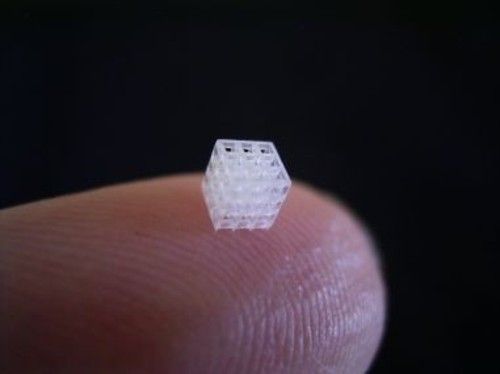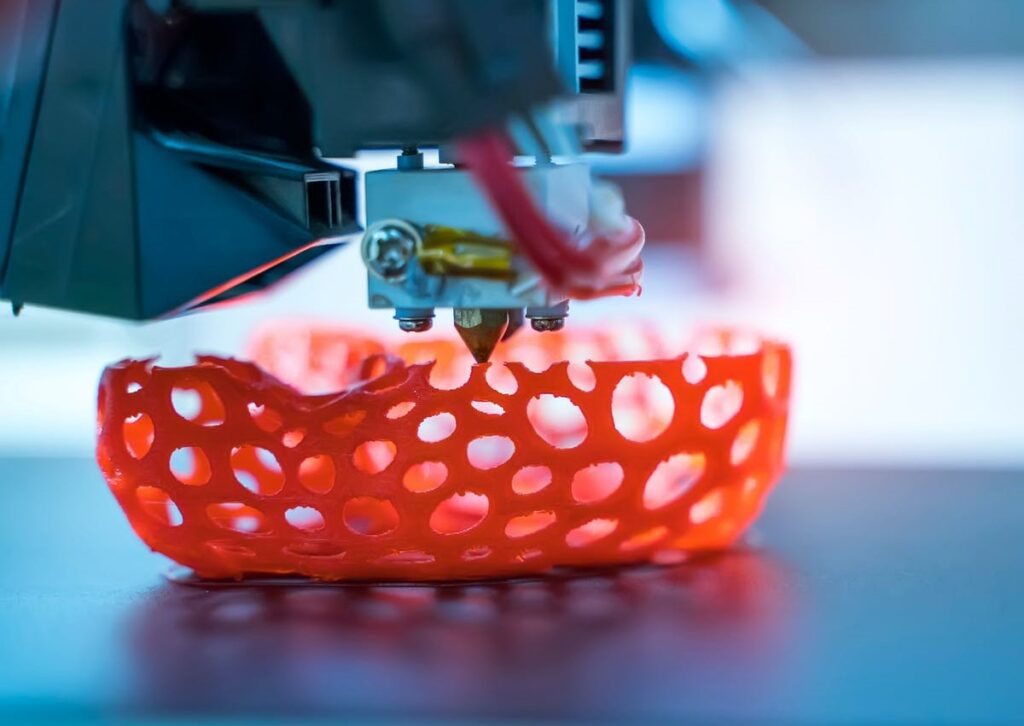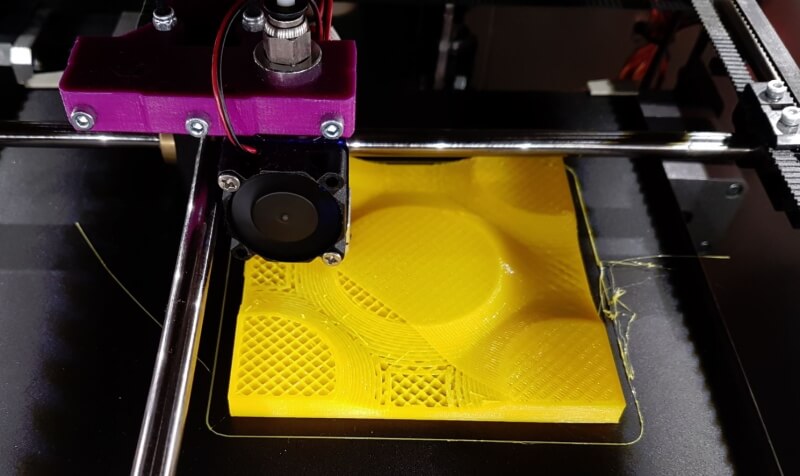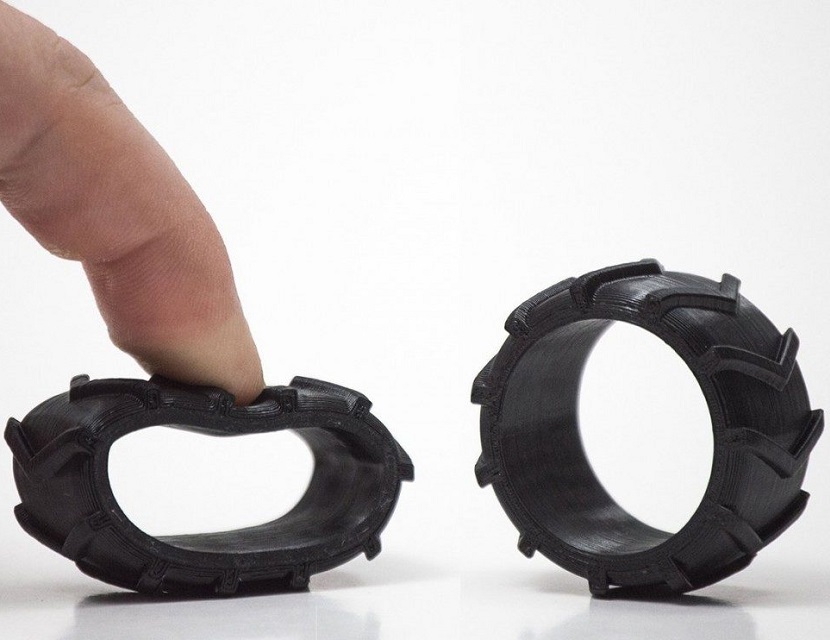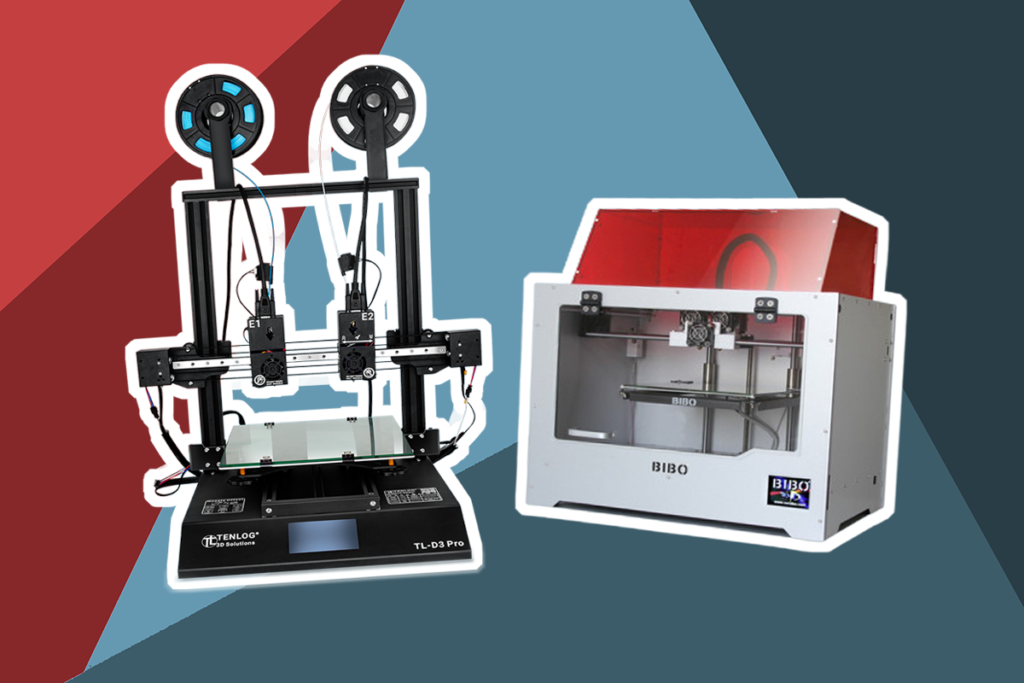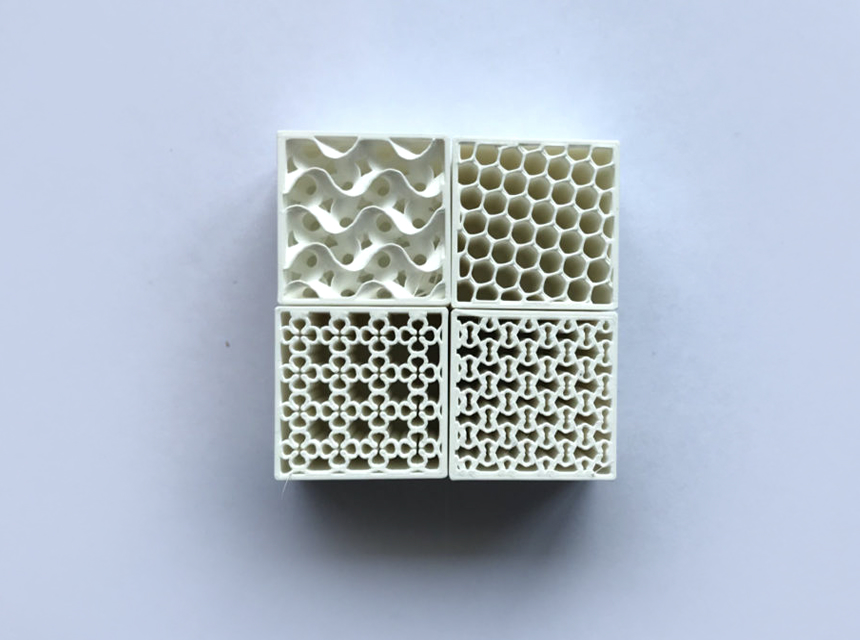

The hot end of a 3D printer is, perhaps, the most important component of the printer’s inner workings. The main purpose of a hot end in a 3D printer is to heat the internal filament and push it through the designated nozzle. They’re made of durable conductive metal and include a heating block, throat, PTFE liner, and PTFE coupler.
Because this part is so integral in the operation of your 3D printer, it’s common to feel worried you might break it by messing with the part. However, as long as you pay attention to things like the material it’s made of, its heat resistance, size, printer compatibility, and other important factors, you shouldn’t run into any issues. To make things easier for you, we’ve compiled a list of the eight best 3D printer hot ends. We’ve also included a helpful buyer’s guide to keeping you on track to choosing the right hot end for your specific printer.
More features: anti-leakage and anti-blocking design, heat resistant
The Wangdd22 is compatible with most 3D printer models, but specifically with all 1.75mm E3D V6 Makerbot 3d printers. The package includes the metal V6 hot end extruder kit, three brass extruder nozzles, a V6 heater block, and two pieces of Teflon tubing. The extruder nozzle is made of stainless steel material, and the hot end uses a 12V high-speed fan to prevent overheating.
The anti-leaking and anti-breakage design incorporated into the Wangdd22 make it superior to others in that these features allow for a cleaner and more precise finished product. The heat resistance and ventilation system of this one also help prevent NTC burn and keep all components of the printer protected from heat damage.
More features: temperature resistance up to 500℃, high strength
The core parts of this hot end consist primarily of copper alloy metal. This type of metal aids in quick and efficient heating and heat dissipation. The hot end has a conical design to also aid in the heat dissipation process. This kit has the ability to withstand heat up to 500 degrees Celsius. The BIQU Dragon Fly is also compatible with all 3d printing filaments, as well as any composite materials with abrasive additives.
Unlike other 3d printer hot ends, this one reigns supreme in its versatility and compact design. It’s easier to configure into your 3d printer than other models, and the inner hole has a lower roughness amount to allow for smoother use of a filament. Beyond that, the ability to use multiple filament types gives you far more flexibility in what you want to design.
More features: silicone cover, durable, optimized design
The Ender 3 hot end is a plug-and-play replacement for various Ender printers. Among those 3d printers are the Ender 3, Ender 3 V2, Ender 3 Pro, and the Ender 3S. The design of this hot end is meant to be user-friendly in that all you need to do is connect the heating tube and temperature thermistor into the control box and then connect them to the terminal housing. The hot end will then plug right into the printer.
The Ender 3 hot end is unlike other hot ends because it offers good quality without requiring someone to spend a lot of money. The hot end also comes with a silicone cover. This cover helps keep temperatures stable and provides a more consistent and higher-quality piece. The parts are also made to be anti-corrosive and resistant to wear and tear.
More features: made in the USA
The Micro Swiss hot end is made in the USA and comes with an aluminum cooling block, a grade 5 titanium heat break, an aluminum heater block, a brass-plated wear-resistant nozzle, and a silicone sock. This particular hot end is designed to fit the following Creality 3d printer models: CR-10, CR-10S, CR-10-S5, CR-10 MINI, and CR-10-S4. It’s also built to fit into the Ender 2, 3, 3 Pro, and 5 models, as well as the TronXY X5S and Tevo Tornado.
Unlike other models, this hot end doesn’t require any type of reconfiguration to the printer itself in order to install. The use of a cooling block with this one also takes away the necessity of using a thermal tube for temperature control. Along with that, the heat break is made with a titanium alloy that provides superior thermal isolation between the heater and cooling blocks.
More features: compatible with all filaments
The Great Design hot end comes in three different styles. Each of the three styles will fit differing 3d printers, so it’s important to make sure you know what your printer model is. These hot ends can withstand temperatures up to 500 degrees Celsius and are compatible with the Creality CR-10 series, Ender 3 series, and Ender 5 series 3d printers. The heater block is made of copper alloy for optimal heat distribution and dissipation.
Unlike some other 3d printer hot ends, this one can be used with a variety of filaments, each with different textures. The cone-like shape of this hot end helps aid in the heat dissipation process and comes with a silicone cover for additional heat protection and safety. The heartbreak also has a smoother filament flow as it has a lower roughness level.
More features: easy to assemble
The Flashforge is a nozzle-style hot end that can withstand up to 240-265 degrees Celsius of heat. There are four different options to choose from: the 240C nozzle, 265C nozzle, AD3-0.3-240, and AD3-0.6-265. This particular hot end is meant to be used with Flash Forge 3d printers and is a replacement nozzle for that specific 3d printer.
Unlike other hot ends like it, the Flashforge is a great product for the price you pay for it. Along with that, it’s easier to replace than other hot-ends and doesn’t take much work to figure out. The design is also very compact and easy to fit into where you need it to go.
More features: high precision, reduces the risk of clogging
This 3d printer hot end is available in three different packages: a single pack, two-pack, or four-pack. This one is designed specifically for Creality CR-10 and Ender series models and is guaranteed to fit any model in either of those series. The cooling system of the hot end is made of a frosting surface aluminum shell and has a lower risk of clogging. This particular hot end is also made to withstand high temperatures and can be used with filaments that require higher temperatures to melt.
Although this hot end doesn’t come with the heating elements, there are specific spots reserved for the installation of heating elements when you install the hot end into your 3d printer. Unlike other hot ends like it, this one is superior in that it requires far less maintenance and lasts longer than other models.
More features: compatible with most filaments, easy to install
The Maxiwatt Hot end is a cylindrically-designed hot end that is compatible with most filament types. The hot end itself is made of aluminum and is metrics M6 compatible. This means that it will fit right in with a majority of the 3d FDM domestic and professional printers, like the Prusa i3and Ender series.
Unlike the other hot ends on our list, this particular one has a unique shape that gives it a leg up on the others. Because the hot end is cylindrical, it has a much easier time distributing heat and dissipating it evenly throughout the machine. An even temperature is a difference between a well-made and desired end product and one that is less ideal.
Finding the right hot end can be a frustrating and stress-inducing process. While some companies may say their product fits your specific 3d printer model, we know that’s not always the case. Because of that, it’s important to make sure you bear in mind the details of each product and read reviews like this where you can get the most detailed and factual information you can before making a final decision.
When shopping around for the right 3d printer hot end, it’s important to bear a few things in mind. For starters, the material of the hot end will tell you how long it will last, and the size of the product will help you decide if it will fit in your printer model. The filament compatibility, design, diameter, and heat resistance are also important factors that will tell you everything you need to know about each specific hot end.
Hot ends can be made from a variety of materials, but most often, you’ll find them in titanium alloy, copper alloy, stainless steel, and plastic. Each part will be made from a different material, but the highest quality hot ends will be made of titanium or stainless steel.
There are also different parts of the hot end that will be made of different materials. The nozzle, for example, is usually made of brass. The nozzle is where the molten filament comes out, so it’s important for this feature to be made of high-quality, heat-resistant material.
The heater block is usually made from aluminum, and heater cartridges are usually ceramic. The thermistor is a glass bead with two wires attached to measure heat block temperature. The heat break and heat brink are typically stainless steel, and the Teflon liner is made of PTFE.
The overall size of your hot end is important to keep in mind because you want to be careful not to buy something that’s either too big to fit in a designated area of your printer or too small and needs extra improvisation to fit correctly.
For example, the Maxiwatt Hot end on our list is certainly the smallest in terms of size that we’ve chosen. However, this compactness allows it to be installed within compatible printers without obstructing the view of any other internal part. On the other hand, it may not fit snugly into some 3d printers, so it’s always important to know which hot ends will be compatible with your 3d printer in terms of size.
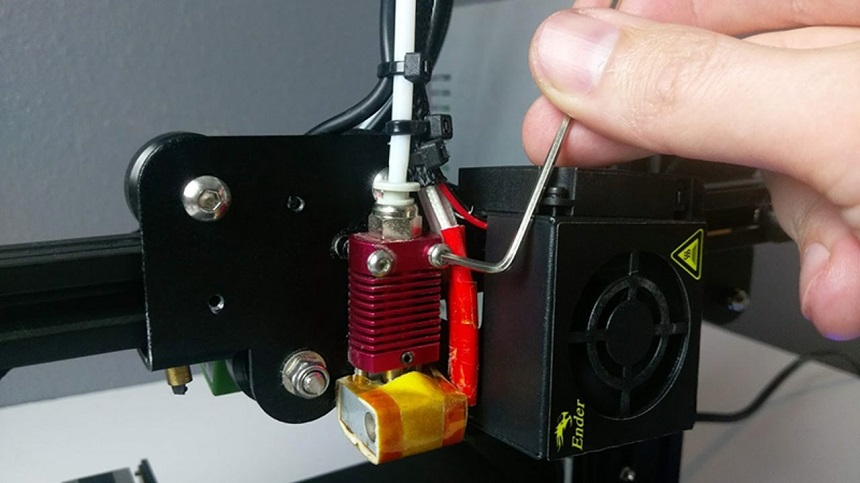
If you buy a hot end that isn’t compatible with your printer, then you’ll have wasted money on a product that doesn’t fit inside of the printer. In this case, it’s usually best to first check with the brand of your 3d printer to see if they carry replacement hot ends for you to purchase. Our best value pick, the Ender 3 Hot end, is a good example of this as it’s guaranteed to fit any 3d printer in the Ender 3 series. With that said, you don’t always have to stay brand loyal. As long as it’s explicitly stated that a certain hot end fits with your 3d printer, you’re good to go.
The design Trusted Source 3D printing gets bigger, faster and stronger The 3D printing technique is also referred to as ‘additive manufacturing’, because instead of chopping or milling a shape out of a larger block, or casting molten material in a mould, it involves building objects from the bottom up. Its advantages include less waste and an ability to print custom designs, such as intricate lattice structures, that are otherwise hard to create. Low-cost hobbyist machines print by squeezing out thin plastic filaments from heated nozzles, building up a structure layer by layer — a method known as fused deposition modelling (FDM). www.nature.com of the hot end is also important as the way it works will give you plenty of information on how to get the most out of your product. For example, some hot ends may be designed to be anti-corrosive, and most are heat-resistant to avoid damage from high temperatures.
In the same respect, it’s also important to make sure you take note of whether or not the hot end comes with the required heating elements. In some cases, they will come with every attachment you need to fully replace the heating part of your printer. However, others will only come with the hot end, but they may have designated spots for heating element hookups.
The hot end uses a 0.4 mm nozzle, but there are others with varying diameters worth noting. In most cases, these diameters will range from 0.25 mm to 0.8 mm. The diameter of your hot end is important as it will determine the kinds of materials you can use in your 3d printing projects. The smaller the diameter, the higher pressure is needed to flow materials through adequately.
In many cases, hot ends will come with the ability to withstand up to 500 degrees Celsius, which equals out 932 degrees Fahrenheit. Because 3d printers get so hot, it’s increasingly important for a hot end to have a heat resistant design to protect itself from temperature damage.
This is important to keep in mind as not all 3d printer hot ends can accommodate this high. Others will cap off at between 240-265 degrees Celsius or 464-509 Trusted Source Convert 265 degrees Celsius to degrees Fahrenheit A degree Celsius is a unit of temperature in the metric system. It has the symbol C. A degree Celsius has 33.8 degrees Fahrenheit. converter.net degrees Fahrenheit.
In order for your 3d printer to run properly, everything rides on the hot end inside. When one hot end stops working, and you’re looking for a replacement for it, keeping in mind the filament compatibility, design, and diameter of your hot end and nozzle are essential in ensuring you choose the right product.
Whether you choose our Editor’s Choice, the Wangdd22 for its anti-leakage and anti-blocking design, our Premium Pick of the BIQU Dragonfly Hot end for its high heat resistance, or our Best Value pick in the Ender 3 Hot end for its quality and budget-friendliness, you’re sure to find a good option.
You may even choose an entirely different hot end altogether. Whether or not you choose one from our list or a totally different one is your prerogative, but we hope our guide helps you find the best 3D printer hot end for your needs.
